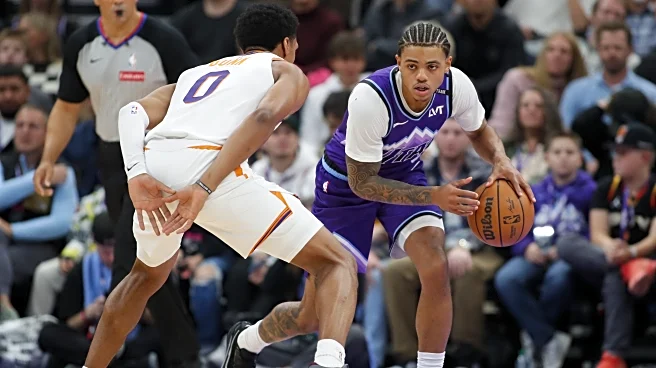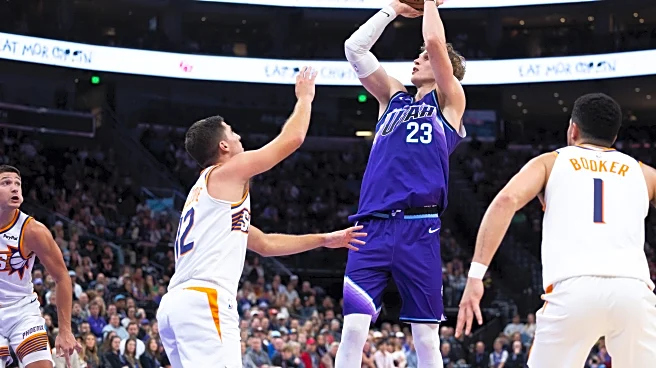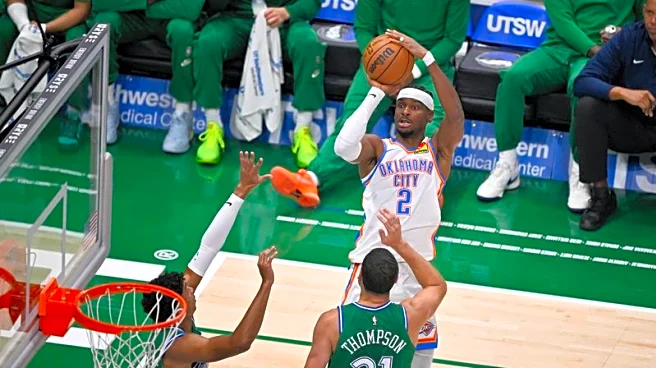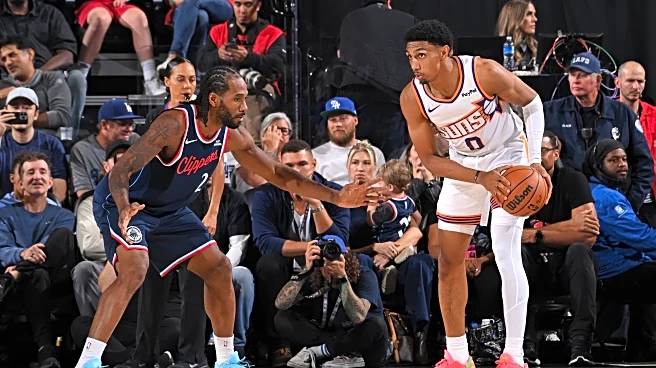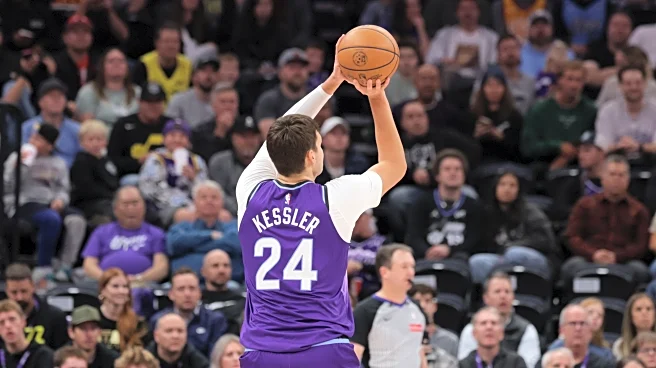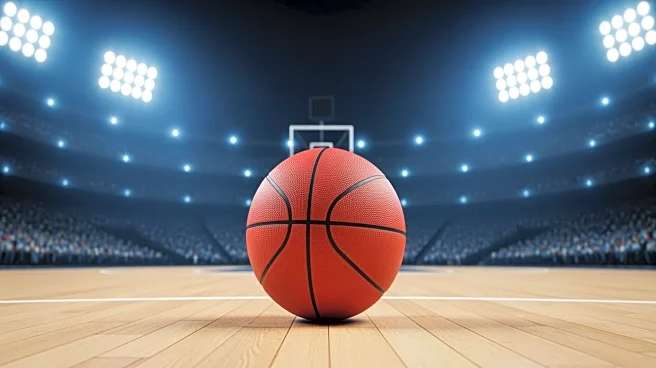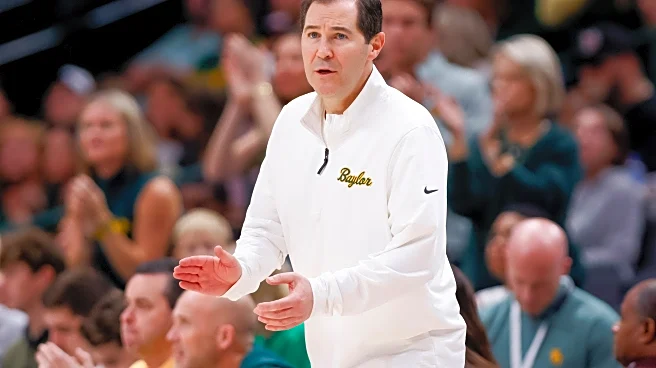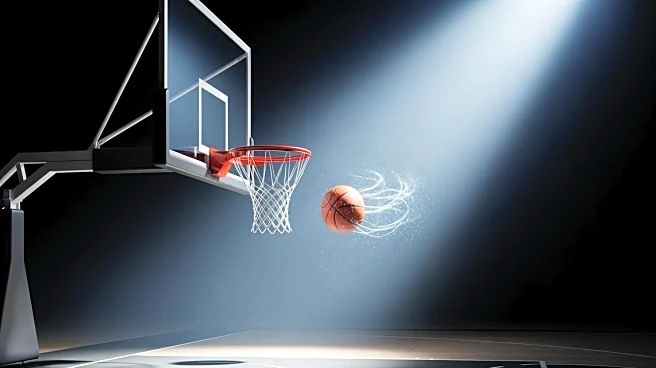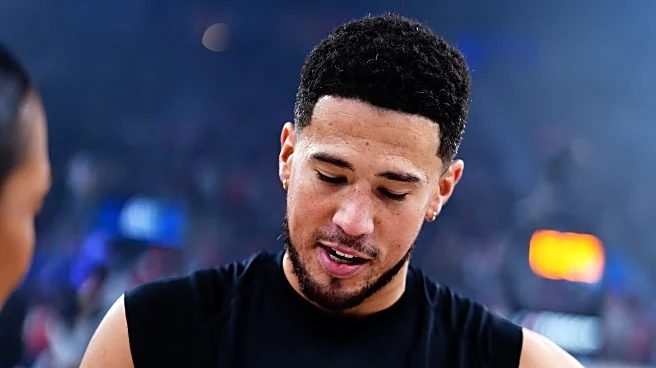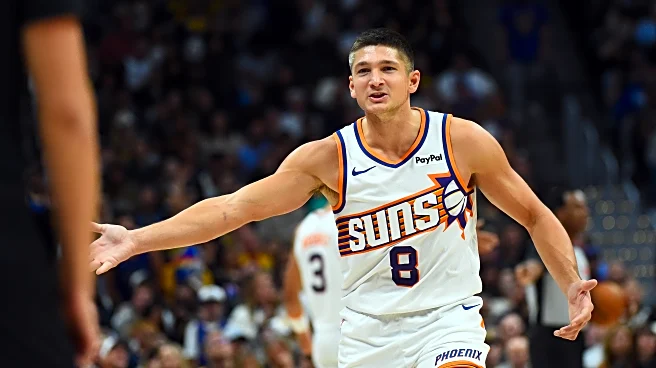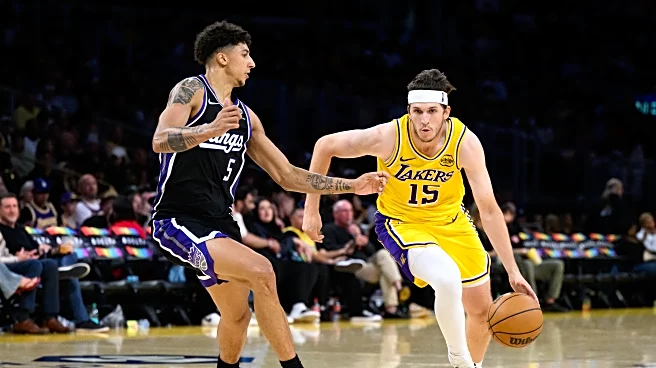IT WOULD BE EASILY UNDERSTANDABLE if your focus wasn’t beaming onto Utah’s Keyonte George at the moment. Lauri Markkanen just assaulted Phoenix for a career-high 51 points on Monday, and appears to be back
in All-Star form (who could have foreseen?). The Jazz, in turn, have apparently discarded all blueprints for their hole-in-the-ground residence at the bottom of the NBA standings, and instead have delicately and deliberately placed each and every one of their eggs into the woven basket labeled ‘winning time’. Through three games, this team boasts a winning record, and their only loss has arrived in the form of a one-point deficit in Sacramento.
Meanwhile, Walker Kessler’s contract status and future with the team loom, and the defensive specialist has yet to miss a shot this year — from both within and without the three-point arc (heinous). Brice Sensabaugh has emerged as a silky smooth scorer, orchestrating the shifting symphony with rhythm and finesse that encapsulates the essence of Jazz more than just about any Utah player in recent memory. Ace Bailey’s illness has us wondering if his preseason delicacies were a one-time-only offering from his NBA basketball oven (though probably not, right? Right?).
See, just like that, we already forgot this article was about Keyonte. Call it the whirlwind of the early season. Blame it on overreactions and a small sample size. Make any number of claims you wish, but I’d like to draw the spotlight to Utah’s third-year point guard out of Baylor and keep it there for a while. Because, in case you haven’t noticed, Keyonte George has been capital-A Awesome in the early season.
Keyonte George stats through 3 games:
20.0 points
9.7 assists (drooling all over my keyboard over this)
69.6% 2PT
18.2% 3PT (work to do)
94.7% FT
3.0 rebounds
1.0 steals
3.7 turnovers
Keyonte’s role with the Jazz has been a challenging adjustment for a hooper who grew up as a score-first guy. In high school at IMG Academy and in college within Scott Drew’s Baylor program, he was handed the ball for one reason and one reason only: to put the ball in the basket.
And he was good. He racked up 15.2 points per contest as a freshman and earned accolade upon accolade. All-Big 12, Conference Rookie of the Year, and the All-Freshman team (obviously) were stars glued onto Key’s ‘good noodle’ board in large part thanks to his inclination to fill up the point column. But here was the catch: he wasn’t efficient, and that sent him sliding on draft night. Scraping by on 33.8% from three-point range and 33.7% from the field entirely (does not compute), his upside as a scorer projected to be confined to a complementary capacity. Maybe a sixth man off the bench who could be good for a heat-check every few games?
Utah’s front office saw all of this and understood Keyonte’s drawbacks in his primary toolbox. But beneath the surface, the Jazz bet on playmaking upside. Yeah, playmaking upside for a player who averaged more turnovers than assists during his lone year in college, that’s rich (this is a viewpoint that I dissuade you from clutching to).
George has had his fair share of detractors in his two full seasons of NBA action, of course, and even now in his third year, plenty still deem him doomed to stumble to the bench once the Jazz can draft a suitable lead guard to make a playoff push. This year, though, there’s something different about Keyonte. Call it the ‘eye test’, or maybe it’s just the way he’s carried himself on and off the court, but there is something starkly different about Utah’s 22-year-old point guard in the infancy of the 2025-26 season, and it’s showing up on the stat sheet.
His playmaking chops are astonishing this year, tallying nearly ten dimes per contest. Will Hardy has Keyonte leading the offense for 35 minutes per night this year, and with that, he’s been sprinkling the sugar in every which way.
With the ball in his hands, George has played spring-loaded. He’s perpetually poised to snap into any direction, and a tight control over his dribble has him penetrating the defense and swirling the opposition in every way he deems suitable. A crossover, drop step, rocket launch past the first line of resistance forces a rotation, that rotation shifts the entire defense, and suddenly, the possession is putty in Keyonte’s hand. The master craftsman shall mold this offensive set in any shape he wishes; do not resist.
I’ve fallen in love with his one-legged runner. Once he breaches the defensive outer wall, Keyonte has found a haven around 7-10 feet from the rim, where he’ll elevate and hang to kiss the rock off the glass and into the woven nylon. It’s a reliable and replicable attempt for a guard whose mass tends to be dwarfed among the giants near the paint, forcing the rim-protection to make a decision. That dilemma demands his adversaries choose: take your chances with this shot or leave your assignment to contest. Either decision can be death for a defense — 20 points and 9.7 assists per game, remember — and he’s been raking it in in the early season.
There exists a patience — a maturity — that had been missing in his rookie and sophomore campaigns. It’s not night and day; we saw flashes and moments of this type of production from George in recent years and in a variety of capacities. But his progress is undeniable. He gets to the foul line for easy points — easy points that he’s cashing in above 95% of the time. He takes shots in rhythm (with a few gut check chucks sprinkled in that I’d love to see eviscerated from his appetite). He gets his teammates involved. He’s making good basketball decisions and doing it at a reliable rate.
Just take a look at the go-ahead basket in the most recent game against Phoenix. George rounds the Kessler screen and pulls up on the reins to size up his switch. Grayson Allen squares his shoulders to the ball handler. The corner of Keyonte’s mouth rises as confidence flashes across his eyes. Markkanen (Mr. 50-ball himself) wraps around an off-ball wall and darts to the lane. The Suns are absorbed by the approaching star’s gravity, and Keyonte plays the comet, slinging his momentum against the grain and locking his hips ahead of the helpless defender. The help approaches, though a moment too late. Basketball to backboard. Backboard to scoreboard. Poetry in sneakers.
(Skip to 1:45 in the embedded video to see the final bucket)
Still, there exists some lingering sourness behind the stat line. His turnovers, in tandem with rising assist numbers, are alarmingly high. Tied for 10th in the NBA at 3.7 cough-ups, Keyonte’s tendency to cough up possession is a metric to track. As great as his rising assist numbers make us feel, an offense can only operate if it retains possession. Still, the season is young, and Keyonte’s giveaway average is marginal when compared with some admittedly prestigious distributors across the league. Stephon Castle (6.7), Devin Booker (6.0), and Cade Cunningham (5.7) have been even sloppier with the basketball, and each of these top three giveaway leaders is universally accepted to be an excellent offensive player.
Even on defense, a realm where Keyonte’s power is muted, flying block attempts, timely steals, and a healthy habit of — what’s the word — effort have been refreshing to witness, even if he’ll never become an all-world ball stopper on the perimeter.
In just three regular-season games, however, Keyonte’s shortcomings have appeared as more of a side-effect of increased production than symptoms of inadequacy. Once his three-point percentage reverts back to the mean (as I expect it should), there won’t be many gaps in his armor to poke at and claim he hasn’t improved. Nearly across the board, this point guard is a bona fide NBA producer, and a darn good one at that.
A recent soundbite taken from the locker room suggests that there is much more to his improvement than reps in the gym. The mental game has taken hold of Utah’s youngster, and he’s found progress in reaching back.
“I feel like I’ve always had good character, but the mental piece of the game is a big piece.” George released. “I think I’ve really bought into that part. It helps having [Kevin] Love right here next to me, who’s spoken out about that stuff. […] his feedback has really been helping me.”
“You hear about sport psychology, you hear about therapy, and a lot of people just say they may not need it. But for me, it’s been real good for me to talk to somebody else that has no clue about me, has no opinion about me — they’re just listening. I’m feeding them good things, bad things, and they’re just listening. […] It took a weight off my shoulders just knowing that somebody else knows what I’m going through. […] It feels so good knowing I can just go out here and play with a clear mind.”
Keyonte George isn’t just improving on the court. It’s not just his stats, numbers, percentages, or other trivial digits that show he’s making strides. Utah’s point guard is working on himself, his mind, and his mentality as he approaches the game of basketball. Kevin Love’s addition to the locker room has invited a spirit of openness, honesty, and growth with his teammates.
For Keyonte, especially, his growth has been unmistakable.
Calvin Barrett is a writer, editor, and prolific Mario Kart racer located in Tokyo, Japan. He has covered the NBA and College Sports since 2024.
